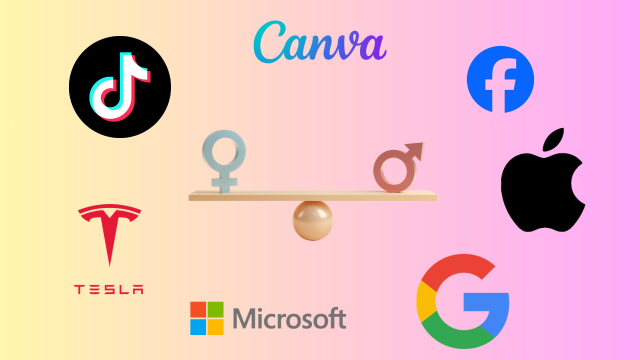Earlier this week, the federal government released the gender pay gaps for nearly 5,000 private sector Australian companies.
This is a move by the Albanese Government to improve workplace gender equality, something that is, sadly, very much still needed today.
These numbers were published by the Workplace Gender Equality Agency (WGEA), a government agency created by legislation to promote and improve gender equality in Australian workplaces.
Minister for Women, Senator Katy Gallagher said the publication of employer gender pay gaps is a “pivotal moment” for gender equality in Australia.
“The gender pay gap is a persistent and complex problem that costs the Australian economy $51.8 billion every year,” she said.
“By shining a light on gender pay gaps at an employer level, we are arming individuals and organisations with the evidence they need to take meaningful action to accelerate closing the gender pay gap in Australian workplaces.”
We have decided to show you how Aussie tech companies and global tech companies with Australian arms are faring with pay parity. And let’s just say the results are interesting.
If you want a bigger analysis of the results, check out what our friends did at Lifehacker.
WGEA Pay Parity Explainer
Before we jump into the list, here is a little explainer of what everything means. First of all, these are wages for the 2022-23 financial year.
These are the base salary and total remuneration median gender pay gaps for private sector employers in Australia with 100 or more employees.
What is a Median Gender Pay Gap?
The median gender pay gap is the value presented in a percentage and is the middle value. The values below are the difference between the median of what men are paid and the median of what women are paid within an organisation.
When the percentage is negative (below -5 per cent), it means that the employer pays the median woman more than the median man. Also known as, in favour of women.
When the percentage is positive (above 5 per cent), it means the employer pays the median woman less than the median man. Also known as, in favour of men.
When the percentage is between -5 per cent and 5 per cent, it’s the optimal figure for an employer.
Australian Technology Companies’ Gender Pay Gap List
Below, we have ordered the companies based on their median base salary from a negative percentage (in favour of women) to a positive percentage (in favour of men). So, the best company with pay parity to the absolute worst.
We have also included total remuneration for complete transparency. Please note that this is a non-exhaustive list and will be updated as more information is published on the WGEA site.
Fisher & Paykel Australia
Base salary: -4.4 per cent
Total remuneration: 4.7 per cent
Volvo Australia
Base salary: -2.8 per cent
Total remuneration: 4.2 per cent
Facebook Australia
Base salary: -1.7 per cent
Total remuneration: -2.6 per cent
Ford Motor Company Australia
Base salary: -0.1 per cent
Total remuneration: 3.4 per cent
Sony Australia
Base salary: 1.8 per cent
Total remuneration: 13.4 per cent
JB Hi-Fi
Base salary: 1.9 per cent
Total Remuneration: 9.4 per cent
Bing Lee
Base salary: 1.0 per cent
Total remuneration: 9.4 per cent
Tesla Motors
Base salary: 2.6 per cent
Total remuneration: 5.2 per cent
Google Australia
Base salary: 3.7 per cent
Total remuneration: 14.9 per cent
Toshiba Australia
Base salary: 5.1 per cent
Total remuneration: 15.9 per cent
Microsoft
Base salary: 6.4 per cent
Total remuneration: 9.7 per cent
Nestle Australia
Base salary: 7.2 per cent
Total remuneration: 17.9 per cent
Apple
Base salary: 8.5 per cent
Total remuneration: 5.5 per cent
American Express
Base salary: 9.5 per cent
Total remuneration: 15.5 per cent
Adobe Systems
Base salary: 10.2 per cent
Total remuneration: 12.5 per cent
Canva
Base salary: 10.9 per cent
Total remuneration: 10.8 per cent
Optus Administration
Base salary: 13.5 per cent
Total remuneration: 14.7 per cent
IBM Australia
Base salary: 13.5 per cent
Total remuneration: 14.4 per cent
TikTok Australia
Base salary: 15.3 per cent
Total remuneration: 19.9 per cent
Aussie Broadband
Base salary: 16.7 per cent
Total remuneration: 16.7 per cent
Dell Australia
Base salary: 16.9 per cent
Total remuneration: 16.7 per cent
Atlassian
Base salary: 17.4 per cent
Total remuneration: 18.1 per cent
Superloop
Base salary: 17.7 per cent
Total remuneration: 17.7 per cent
Telstra Group
Base salary: 18.6 per cent
Total remuneration: 20.2 per cent
TPG Telecom (owns Vodafone Australia)
Base salary: 20.8 per cent
Total remuneration: 21.5 per cent
Harvey Norman
Base salary: 21.4 per cent
Total remuneration: 29.0 per cent
Hewlett-Packard Australia
Base salary: 22.1 per cent
Total remuneration: 24.3 per cent
Breville
Base salary: 22.5 per cent
Total remuneration: 22.5 per cent
LG Electronics Australia
Base salary: 23.8 per cent
Total remuneration: 24.2 per cent
Toshiba International
Base salary: 25.3 per cent
Total remuneration: 23.4 per cent
Dyson Appliances
Base salary: 34.1 per cent
Total remuneration: 27.3 per cent
Qantas Airways
Base salary: 39.3 per cent
Total remuneration: 37 per cent
Virgin Australia
Base salary: 41.7 per cent
Total remuneration: 41.7 per cent
Note: Netflix Australia, Logitech, Newscorp Australia, Whirlpool Australia, ASUS and NBN Co were not on the list.
Check out the WGEA data explorer here.
Image: iStock/Athina Mallis
